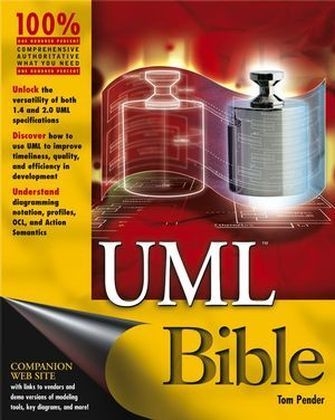
UML Bible
Hungry Minds Inc,U.S. (Verlag)
978-0-7645-2604-6 (ISBN)
- Titel ist leider vergriffen;
keine Neuauflage - Artikel merken
If UML can do it, you can do it too...Todays economy demands top quality software development in record time and with maximum efficiency. UML arms you to meet that challenge, and the UML Bible supplies the most comprehensive UML education you can get. One volume covers everything from understanding and using UML and diagramming notation to the object constraint language (OCL) and profiles, in both 1. 4 and 2. 0 UML specifications. Its the one resource you can rely on to virtually guarantee your success.
Inside, you'll find complete coverage of UML Learn to model object structure, interactions, behavior, and architecture using UML Explore diagram structure and usage Understand how to utilize the overlapping features of the UML diagrams to facilitate the modeling process Learn to exploit the features of the UML diagrams to test them for consistency and accuracy Learn to assess modeling tools to choose the one that suits your needs Comprehend how the statechart diagram is used to model changes in an object over its lifetime Apply object constraint language (OCL) and work with Action Semantics to specify behaviors that ultimately will be implemented in code Understand the XML Model Interchange (XMI) standard that helps enable model sharing between modeling tools and other XMI-compatible applications Customize UML to meet the needs of specific industries or application types
Tom Pender has been working in software development for over 22 years. Most recently he has author six courses on the UML which he has taught throughout the U.S. and 12 other countries. He has also spent the last four years teaching and consulting with companies who are transitioning to object-oriented technologies. Prior to that, his software development roles included everything from programmer to manager, teacher, writer, business systems analyst, and consultant. His work has spanned wholesale and retail distribution, investing, insurance, accounting, international shipping, embedded phone applications, materials management, and coal mining.
Preface.
Acknowledgments.
Part I: An Introduction to UML.
Chapter 1: What Is UML?
Chapter 2: UML Architecture.
Chapter 3: UML Diagrams and Extension Mechanisms.
Chapter 4: Object-Oriented Concepts.
Part II: Modeling Object Structure.
Chapter 5: Capturing Rules about Objects in a Class Diagram.
Chapter 6: How to Capture Rules about Object Relationships.
Chapter 7: Testing with Objects.
Part III: Modeling Object Interactions.
Chapter 8: Modeling Interactions in UML 1.4.
Chapter 9: Modeling Interactions in UML 2.0.
Chapter 10: Modeling an Object's Lifecycle in UML 1.4.
Chapter 11: Modeling an Object's Lifecycle in UML 2.0.
Part IV: Modeling Object Behavior.
Chapter 12: Modeling the Use of a System with the Use Case Diagram.
Chapter 13: Modeling Behavior Using an Activity Diagram.
Part V: Modeling the Application Architecture.
Chapter 14: Using Packages.
Chapter 15: Modeling Software Using the Component Diagram.
Chapter 16: Using Deployment Diagrams in UML 1.4.
Chapter 17: Representing an Architecture in UML 2.0.
Part VI: Bringing Rigor to the Model.
Chapter 18: Applying Constraints to the UML Diagrams.
Chapter 19: Action Semantics.
Part VII: Automating the UML Modeling Process.
Chapter 20: Using a Modeling Tool.
Chapter 21: Customizing UML Using Profiles.
Chapter 22: XML Metadata Interchange.
Appendix A: UML 1.4 Notation Guide.
Appendix B: UML 2.0 Notation Guide.
Appendix C: Standard Elements.
Glossary.
Index.
| Erscheint lt. Verlag | 26.9.2003 |
|---|---|
| Zusatzinfo | Illustrations |
| Verlagsort | Foster City |
| Sprache | englisch |
| Maße | 190 x 233 mm |
| Gewicht | 1434 g |
| Themenwelt | Informatik ► Office Programme ► Outlook |
| Mathematik / Informatik ► Informatik ► Programmiersprachen / -werkzeuge | |
| Informatik ► Software Entwicklung ► Objektorientierung | |
| ISBN-10 | 0-7645-2604-9 / 0764526049 |
| ISBN-13 | 978-0-7645-2604-6 / 9780764526046 |
| Zustand | Neuware |
| Haben Sie eine Frage zum Produkt? |
aus dem Bereich


